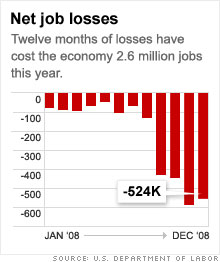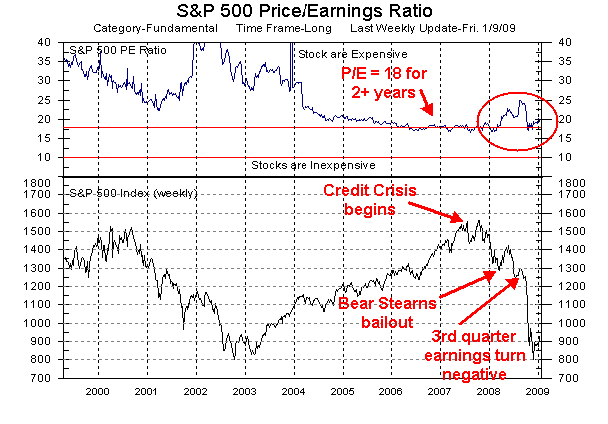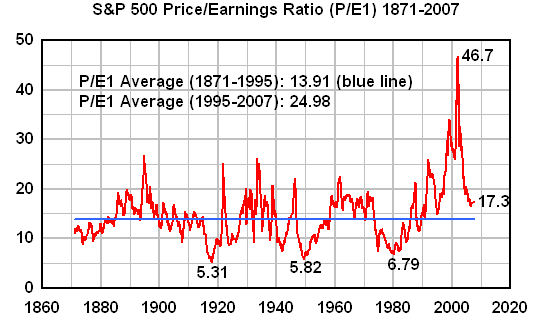
Dynamics

|
Generational Dynamics |
| Forecasting America's Destiny ... and the World's | |
| HOME WEB LOG COUNTRY WIKI COMMENT FORUM DOWNLOADS ABOUT | |
Other trends indicate that the world is grinding to a halt.
Regular readers know that I don't write about every economic indicator, but I do write about economic trends. And what's incredible is how disastrous the trends have been getting, especially since September or so.
Thus, last month I wrote "World wide transportation and trade sink farther into deep freeze," about the shocking 90%+ collapse of the Baltic Dry Index, a measure of worldwide shipping rates. In November, I wrote "Unrest grows in China as unemployment situation becomes 'grim,'" to describe the situation in China.
 |
This past week, the latest jobs report showed that over half a million jobs were lost in December alone, and this has been mostly an increasing trend for a year. Most economists expect job losses to grow. However, there's little evidence that stock market investors pay much attention to bad news in the jobs market. Economists like to point out that this is a "lagging indicator," indicating that you can still hope for a stock market surge, even while the job market worsens.
But corporate earnings are different, because they're used in the computation of price/earnings ratios (also called "valuations"), and investors definitely pay close attention to these ratios. In fact, as I've written many times, the evidence is that valuations are a major factor analyzed by most automated stock buy/sell programs.
As regular readers know, for the last few quarters I've been posting the table of S&P 500 average corporate earnings estimates, based on figures from CNBC Earnings Central supplied by Thomson Reuters. These tables have shown sharp falls in corporate earnings estimates from week to week in each of the past five quarters.
Now, the fourth quarter estimates are becoming available. It's now been two weeks since the fourth quarter ended, and here's the result:
Date 4Q Earnings growth estimate as of that date
------- -------------------------------------------
Feb 6: 50.0%
Jul 1: 59.3% Start of previous (3rd) quarter
Oct 1: 46.7% Start of quarter
Dec 5: 10.0%
Dec 12: 5.9%
Dec 19: 0.5%
Dec 26: -0.9% End of quarter
Jan 2: -1.2%
Jan 9: -15.1%
Jan 16: -20.2%
The trend indicated by this table is substantially worse than the trends for the preceding quarters (see here for the final third quarter table). In the table for the third quarter, the earnings estimate was +12.6%, and by the 2nd week after the end of the third quarter, the estimate was -7.8%, with the estimate falling by 3-4% per week. In the fourth quarter estimates, if the trend continues, the fourth quarter will be significantly worse than the preceding quarters.
To understand why this means that another stock market plunge is in the offing, take a look at the following chart. There's a price/earnings ratio chart at the bottom of this web site's home page, and it gets updated automatically every Friday. Here's last Friday's version of the chart:
 |
Notice that P/E ratios (shown in the top portion of the chart) held steady at around 18 for the entire years 2006-2007. This happened despite the fact that stock prices (shown on the bottom half of the chart) varied wildly.
The only way that this could have happened is if investors purposely held stock prices at the right levels, and that means that the buy/sell algorithms in their computers made decisions based on whether a stock's price was above or below 18 times earnings. There's no other reasonable explanation for how P/E could have held steady at 18 for over 2 years.
Remarkably, the same value P/E=18 held for several months, at a time when corporate earnings estimates were beginning to plummet for the first time in years. This means that investors pushed stock prices down, matching the falling earnings estimates, in order to maintain P/E=18.
Sentiment changed dramatically on March 15, 2008. To understand why it changed, look at the following chart that I first posted in February, 2008. The data in the first two columns was supplied by Thomson Reuters in February 2008, and I've added the third column:
Period Earnings growth estimate Actuals ------- ------------------------ ------- Q1 2008 2.6% -17.3% Q2 2008 3.5% -22.0% Q3 2008 20.0% -18.7% Q4 2008 50.0% -20.2% (As of Jan 16, 2009)
By March 15, investors were reeling from the constant fall in corporate earnings estimates, but they still believed that the economy would surge in the second half of 2007, and that we'd see incredibly high earnings growth -- 20-50% each quarter.
That's why sentiment changed. When the Bear Stearns bailout occurred on March 15, investors breathed a sigh of relief and said, "The worst is over."
That's when they abandoned the P/E=18 formula, and pushed stock prices and P/E earnings up to around 25. This was, I believe, almost entirely based on the assumption that earnings growth would be 20-50% in each of the last two quarters.
These sentiments came crashing down in September, when 3rd quarter earnings estimates turned negative. It was suddenly apparent that earnings would not grow 20% in the 3rd quarter, as had been hoped, but would actually follow the pattern of the preceding 3 quarters, which meant that they would fall around 15-20%. Stock prices fell sharply, returning the P/E index to 18, according to what passes for standard formulas these days.
Since mid-November, stock prices have been fairly steady, but earnings estimates have continued to fall, and P/E ratios have again been creeping upwards, now around 20.
Today, investors are going to be facing another moment of truth. We've seen that economic trends around the world started falling rapidly in the fourth quarter of last year, bringing worldwide trade and shipping almost to a standstill. So it's not surprising that corporate earnings estimates might fall much faster than usual for the fourth quarter, and they've already begun to do so, as shown by the table at the beginning of this article.
It seems to take a few weeks for investors to react to this kind of change, but you should expect that reaction to be another plunge in stock prices over the next month or so.
Finally, to close off this new discussion of P/E ratios, let's return to an old discussion, and a graph that I first posted a year ago in "How to compute the 'real value' of the stock market":
 |
Investors have been using the formula P/E=18 in their buy/sell decisions, but that number is WAY above historical averages, which means that it's going to fall way below average, by the Law of Mean Reversion. (Incidentally, a couple of web site readers in their messages to me have been confusing the Law of Mean Reversion with Regression to the Mean, which is a very different thing. I discussed this further in the Generational Dynamics forum.)
The historic average of the P/E1 (price divided by one-year trailing earnings) is about 14. From 1995 to the present, it's averaged around 25, creating a huge bubble. By the Law of Mean Reversion, the price/earnings ratio will fall well below 10 for a dozen years or so. You can see that it's poised to fall quickly in the near future, leading to a stock market crash.
I've received a tiny bit of criticism for continuing to be so gloomy as the inauguration of Barack Obama approaches, when everyone else is celebrating. There's no question that this is a wonderful historic moment for the United States of America, and perhaps I should be more infected with the worldwide enthusiasm for this moment. If I were capable of being so infected, I'm sure I'd be a more wonderful person, but I also would have a completely different personality, and wouldn't be able to be nearly as effective in writing for this web site. So let everyone else cheer and celebrate the healing of the world on January 21, and I'll continue to be a curmudgeon and focus on what's REALLY going to happen.
(Comments: For reader comments, questions and discussion, as
well as more frequent updates on this subject, see the Financial Topics thread of the Generational Dynamics forum. Read
the entire thread for discussions on how to protect your money.)
(18-Jan-2009)
Permanent Link
Receive daily World View columns by e-mail
Donate to Generational Dynamics via PayPal
Web Log Summary - 2016
Web Log Summary - 2015
Web Log Summary - 2014
Web Log Summary - 2013
Web Log Summary - 2012
Web Log Summary - 2011
Web Log Summary - 2010
Web Log Summary - 2009
Web Log Summary - 2008
Web Log Summary - 2007
Web Log Summary - 2006
Web Log Summary - 2005
Web Log Summary - 2004
Web Log - December, 2016
Web Log - November, 2016
Web Log - October, 2016
Web Log - September, 2016
Web Log - August, 2016
Web Log - July, 2016
Web Log - June, 2016
Web Log - May, 2016
Web Log - April, 2016
Web Log - March, 2016
Web Log - February, 2016
Web Log - January, 2016
Web Log - December, 2015
Web Log - November, 2015
Web Log - October, 2015
Web Log - September, 2015
Web Log - August, 2015
Web Log - July, 2015
Web Log - June, 2015
Web Log - May, 2015
Web Log - April, 2015
Web Log - March, 2015
Web Log - February, 2015
Web Log - January, 2015
Web Log - December, 2014
Web Log - November, 2014
Web Log - October, 2014
Web Log - September, 2014
Web Log - August, 2014
Web Log - July, 2014
Web Log - June, 2014
Web Log - May, 2014
Web Log - April, 2014
Web Log - March, 2014
Web Log - February, 2014
Web Log - January, 2014
Web Log - December, 2013
Web Log - November, 2013
Web Log - October, 2013
Web Log - September, 2013
Web Log - August, 2013
Web Log - July, 2013
Web Log - June, 2013
Web Log - May, 2013
Web Log - April, 2013
Web Log - March, 2013
Web Log - February, 2013
Web Log - January, 2013
Web Log - December, 2012
Web Log - November, 2012
Web Log - October, 2012
Web Log - September, 2012
Web Log - August, 2012
Web Log - July, 2012
Web Log - June, 2012
Web Log - May, 2012
Web Log - April, 2012
Web Log - March, 2012
Web Log - February, 2012
Web Log - January, 2012
Web Log - December, 2011
Web Log - November, 2011
Web Log - October, 2011
Web Log - September, 2011
Web Log - August, 2011
Web Log - July, 2011
Web Log - June, 2011
Web Log - May, 2011
Web Log - April, 2011
Web Log - March, 2011
Web Log - February, 2011
Web Log - January, 2011
Web Log - December, 2010
Web Log - November, 2010
Web Log - October, 2010
Web Log - September, 2010
Web Log - August, 2010
Web Log - July, 2010
Web Log - June, 2010
Web Log - May, 2010
Web Log - April, 2010
Web Log - March, 2010
Web Log - February, 2010
Web Log - January, 2010
Web Log - December, 2009
Web Log - November, 2009
Web Log - October, 2009
Web Log - September, 2009
Web Log - August, 2009
Web Log - July, 2009
Web Log - June, 2009
Web Log - May, 2009
Web Log - April, 2009
Web Log - March, 2009
Web Log - February, 2009
Web Log - January, 2009
Web Log - December, 2008
Web Log - November, 2008
Web Log - October, 2008
Web Log - September, 2008
Web Log - August, 2008
Web Log - July, 2008
Web Log - June, 2008
Web Log - May, 2008
Web Log - April, 2008
Web Log - March, 2008
Web Log - February, 2008
Web Log - January, 2008
Web Log - December, 2007
Web Log - November, 2007
Web Log - October, 2007
Web Log - September, 2007
Web Log - August, 2007
Web Log - July, 2007
Web Log - June, 2007
Web Log - May, 2007
Web Log - April, 2007
Web Log - March, 2007
Web Log - February, 2007
Web Log - January, 2007
Web Log - December, 2006
Web Log - November, 2006
Web Log - October, 2006
Web Log - September, 2006
Web Log - August, 2006
Web Log - July, 2006
Web Log - June, 2006
Web Log - May, 2006
Web Log - April, 2006
Web Log - March, 2006
Web Log - February, 2006
Web Log - January, 2006
Web Log - December, 2005
Web Log - November, 2005
Web Log - October, 2005
Web Log - September, 2005
Web Log - August, 2005
Web Log - July, 2005
Web Log - June, 2005
Web Log - May, 2005
Web Log - April, 2005
Web Log - March, 2005
Web Log - February, 2005
Web Log - January, 2005
Web Log - December, 2004
Web Log - November, 2004
Web Log - October, 2004
Web Log - September, 2004
Web Log - August, 2004
Web Log - July, 2004
Web Log - June, 2004